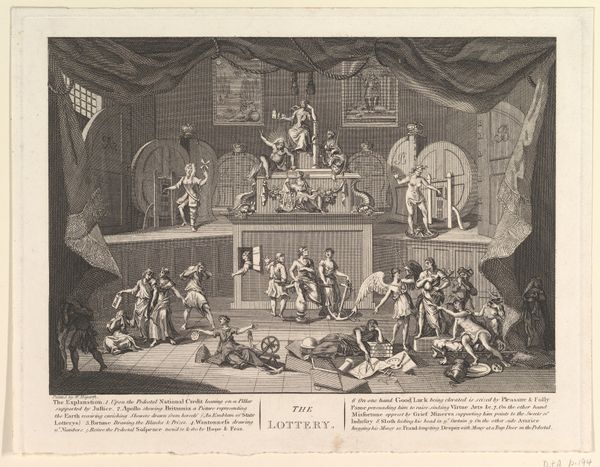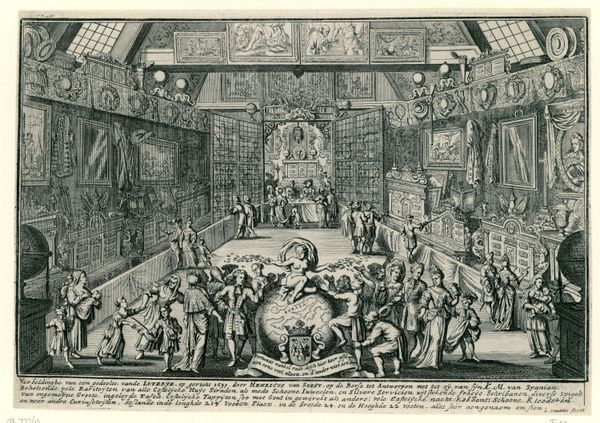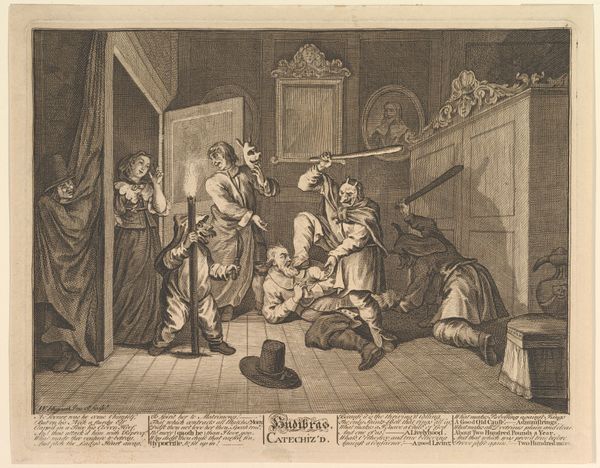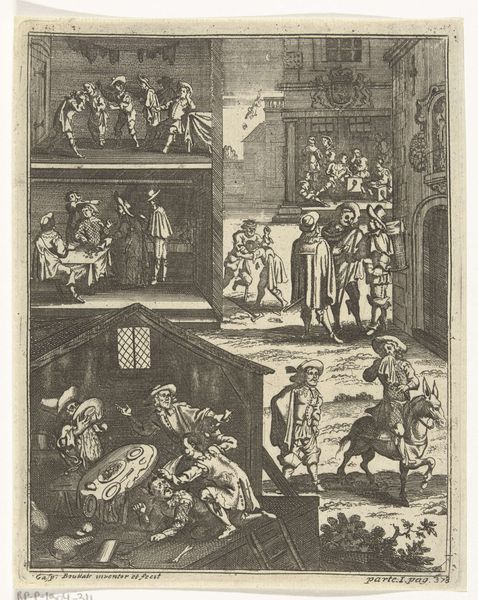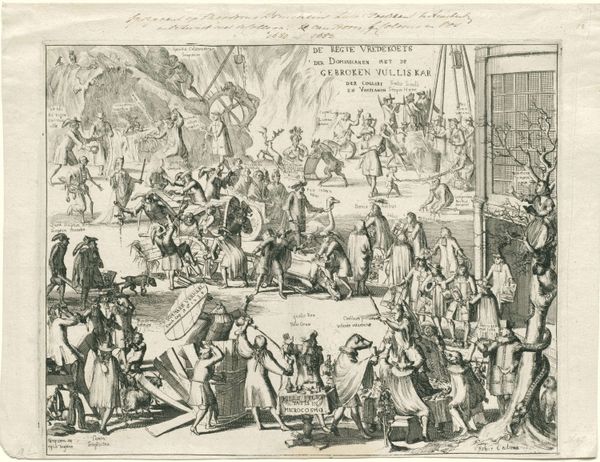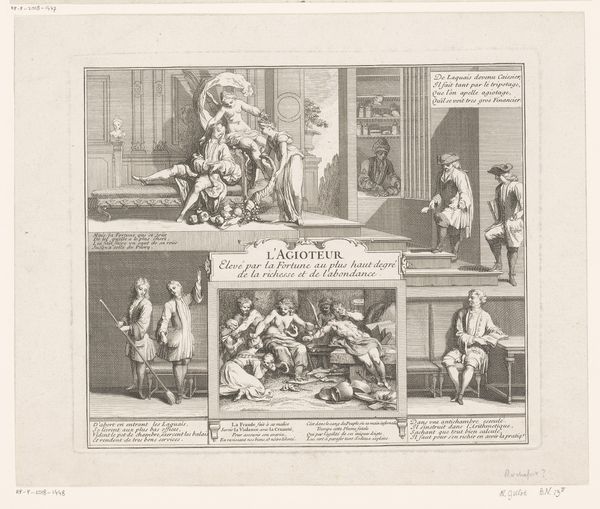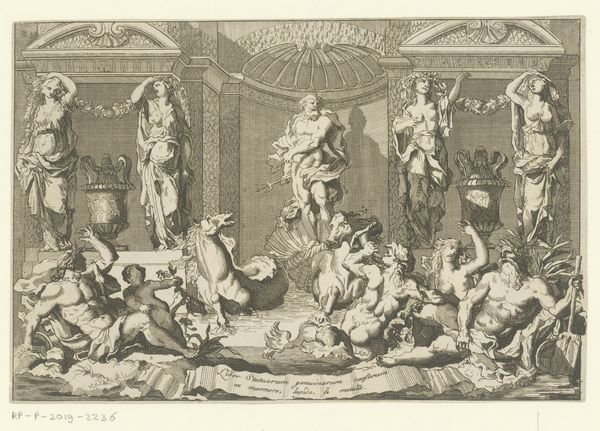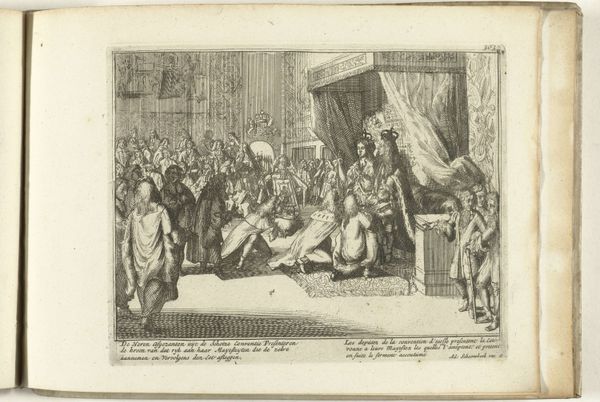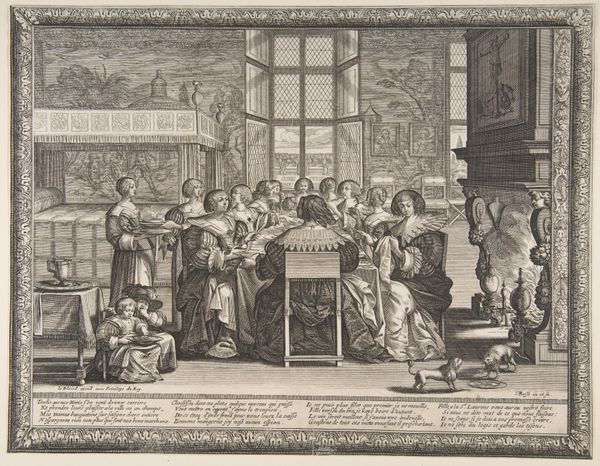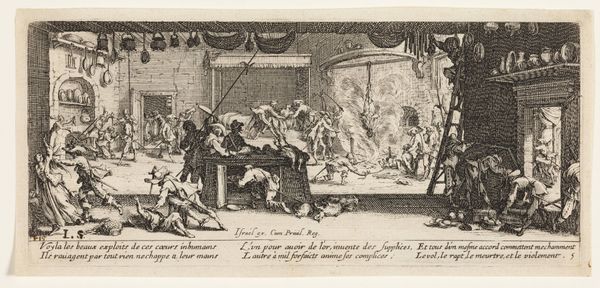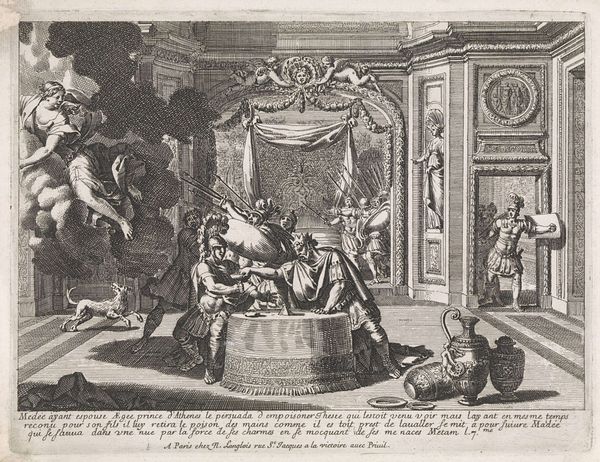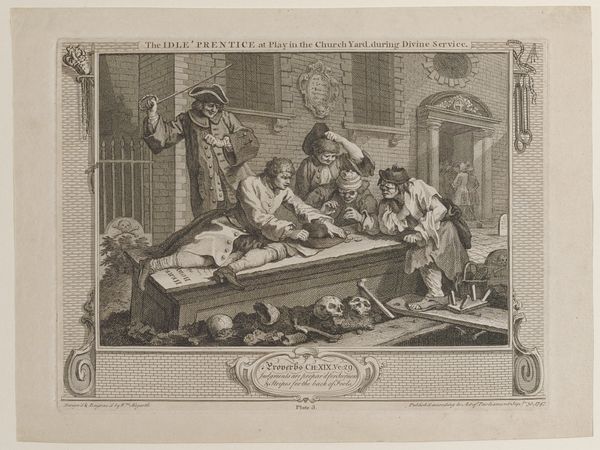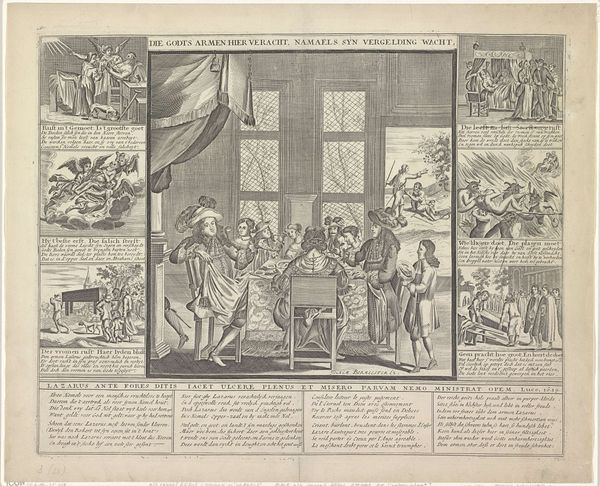
engraving
#
allegories
#
allegory
#
narrative-art
#
baroque
#
symbol
#
figuration
#
line
#
genre-painting
#
history-painting
#
engraving
Copyright: Public domain
Editor: Here we have William Hogarth's engraving, "The Lottery." It's quite detailed. What strikes me is its theatrical feel—almost like a stage production. There are so many figures crammed in, but what's it all about? How do you interpret this work? Curator: Hogarth, in this satirical engraving, unveils the 18th-century lottery as a stage for societal vices and delusions. Think of it as a commentary on the perils of financial speculation during a period of rapid economic expansion. He shows the lottery as more than just a game; it's a theater where figures like "Good Luck" are being seized by "Pleasure" and "Folly." Note the intentional moral framing. Editor: So, it's a morality play? Is he suggesting that participating in the lottery is inherently wrong? Curator: Not necessarily 'wrong,' but certainly fraught with dangers. Consider how Hogarth situates 'National Credit' leaning on 'Justice' – hinting that even national institutions were implicated. And notice how "Wantonness" drains a tub. Hogarth is critiquing a system that fuels societal decay, distracting from honest industry, while enriching only a select few. The image challenges us to consider who benefits and at whose expense? Editor: The allegorical figures make more sense now. So it's not just about the lottery itself, but what it represents. Thank you, I get a clearer vision of the social statement Hogarth was making. Curator: Exactly! By unpacking the symbols and placing this engraving within its historical context, we reveal the broader social, political, and economic tensions Hogarth sought to expose. It mirrors our own relationship with economic systems and cultural values.
Comments
No comments
Be the first to comment and join the conversation on the ultimate creative platform.
